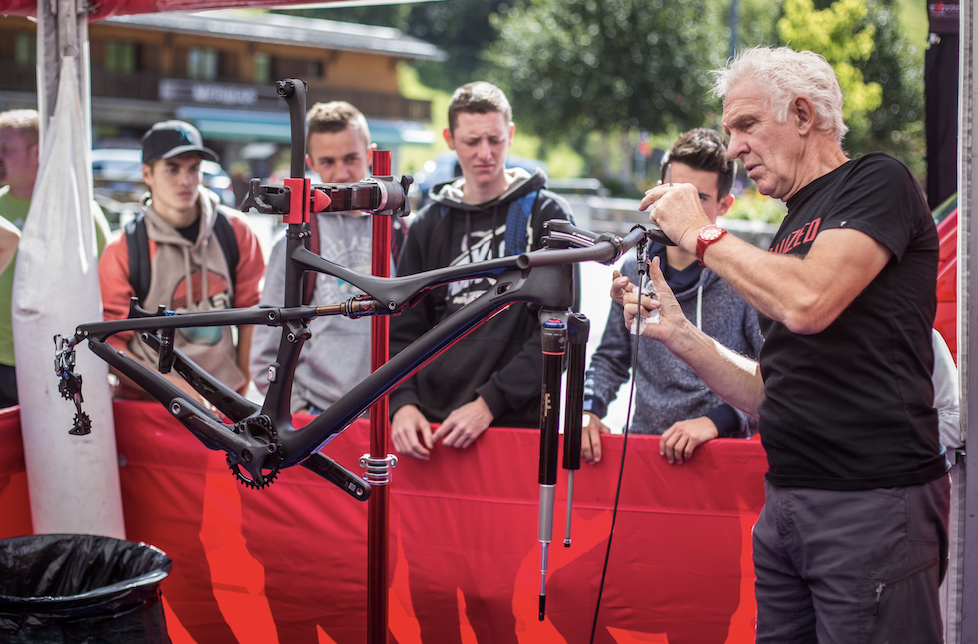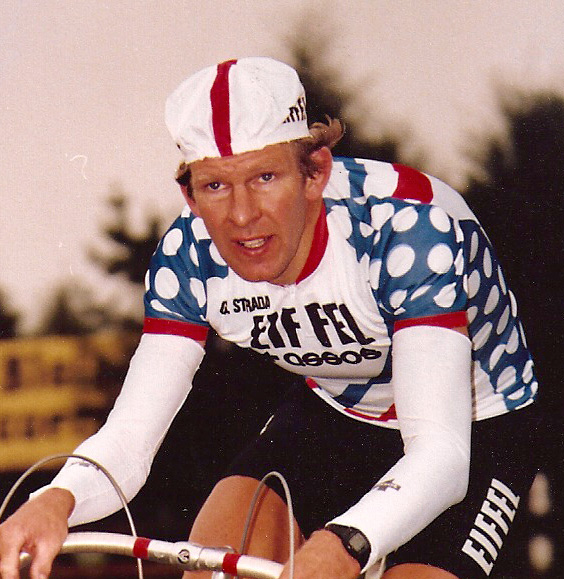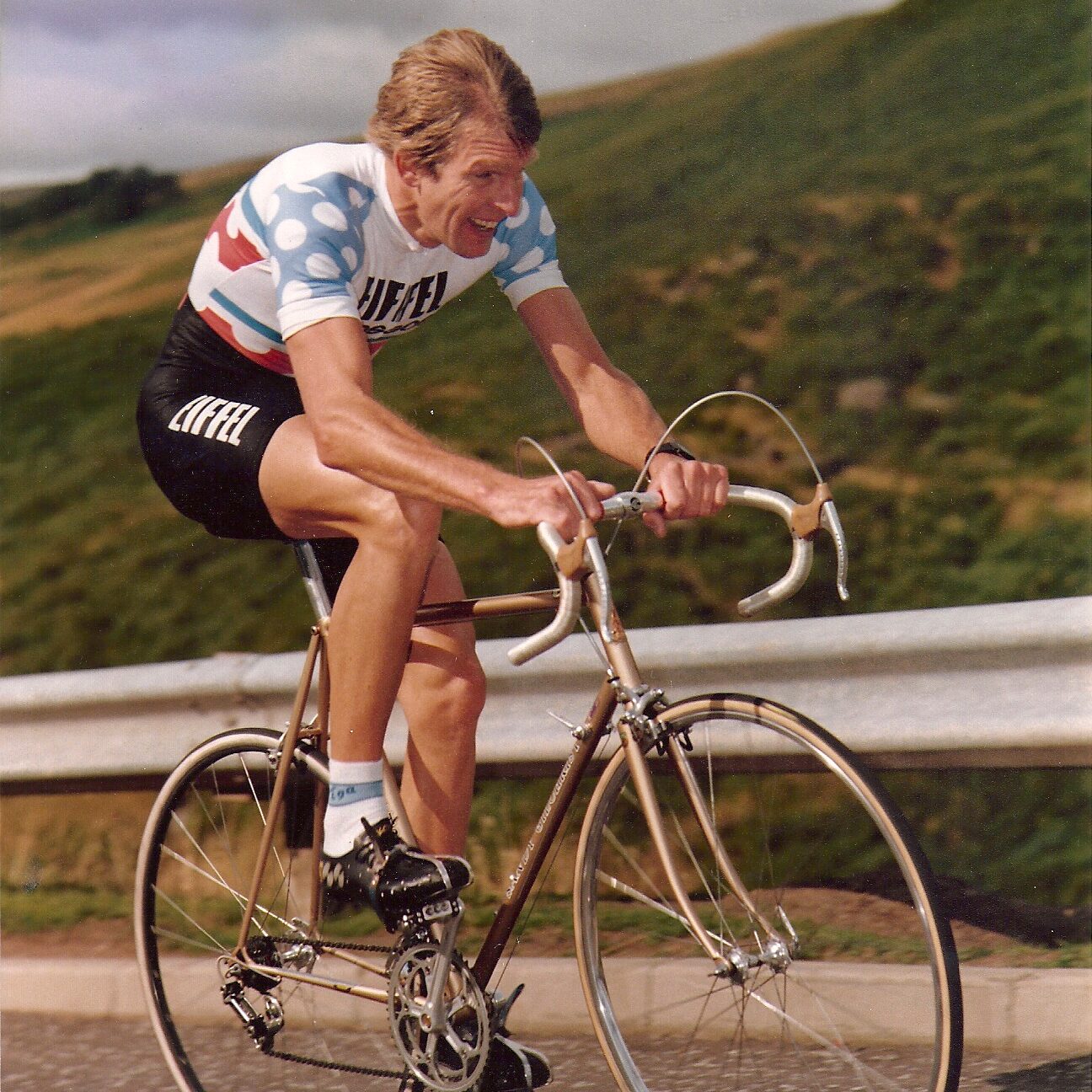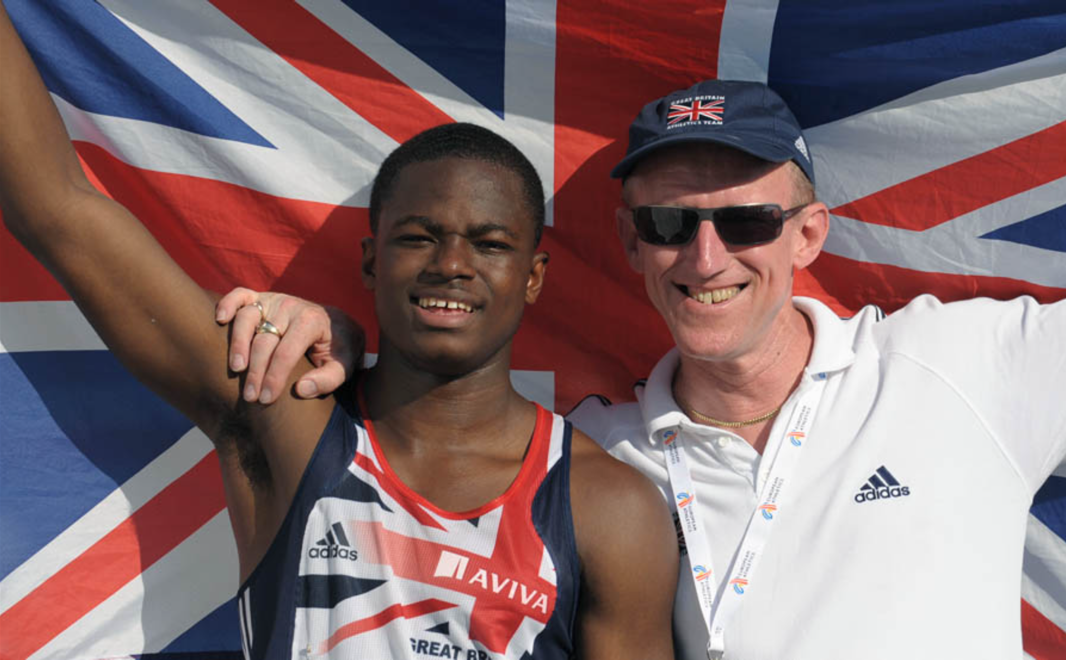You have seen cyclists on the road and on the track, but how do they get there? No cyclist is the same, so how do mechanics sort it all out? Sidelines goes into the cycling workroom to find out.
Sandy Gilchrist, 80, born in Peebles, Edinburgh, has been cycling and performing cycling mechanics for over 60 years. Fixing wheels, adjusting saddles, and tuning gears at 10 different Olympics for over five different countries, Gilchrist is a master at his trade.
Thinking ahead is key to being a great mechanic at tournaments, there is no point turning up on the day without a plan, although there are definitely more laid-back athletes.
I had the privilege of working with some cycling greats such as Sir Bradley Wiggins, Sir Chris Hoy, and one of the most laid-back people I have known, Chris Boardman CBE.
At the 1996 Atlanta Olympics, Chris was riding a prototype bike with newly released electronic gears. They were working perfectly until the morning of his time trials.
We went into the back to look for some spares, and there were none to be found. I was running around panicking, trying to sort the problem before he arrived.
Forty-five minutes before the race was set to start, he had the option of his weather bike, which was much heavier, or a bike with no brakes.

He calmly said, “Don’t worry, I have some spares back at the village.”
I worked tirelessly to the last minute before the race, taping the extra cables onto the top of his bike, and if you watch the replay, you can see the bike looked a mess.
Other athletes would have been thrown off by the stress, but Chris ended up finishing third.

I grew up loving cycling from a young age because I used to visit a local cycling club, go to youth hostels, and ride with them, and it snowballed from there.
Having been chosen to represent Scotland internationally for a few different events, after living in France for a prolonged period, I got to ride for GB at the World Championships, and I thoroughly enjoyed that part of my life.
Although looking back at that time, I do have regrets.
When I moved across the border, I had the chance to go from domestic to professional, but I had that belief that I wasn’t good enough. But now, having worked in mechanics for so long, I realised I probably could’ve been, and ultimately I probably was!
That transition into mechanics from my career as a cyclist sort of naturally happened; it was great because I could strive to be the best I could be, but also help others perform to their best, having opened a bike shop in Edinburgh in 1968.
It was 20 years later that I worked my first Olympics, 1988 in Seoul. It was long days, but it was one of the best and funniest experiences.
The team and I were working in the workshop, and Princess Anne came to visit the GB Olympic camp.
On that day, a mechanic was helping me out on an issue and he explained to her that we were so busy we hadn’t had a chance to get lunch or even dinner sometimes.
She looked him up and down and said, “You seem to be doing okay,” and walked off.
From that day on, we christened him ‘BFM’ (big fat mechanic). We called him ‘BFM’ so many years after that, we ended up forgetting his actual first name. But it isn’t all laughs and jokes; a lot of grafting goes on to prepare the bikes and the athletes.
What a lot of people don’t realise is that the track is the most difficult discipline at a major event because you have different wheels and tire pressures for different events, so a lot of planning has to be done prior to the race.
The wheels, gears, frames, and tire pressure vary a lot from cyclist to cyclist, technology has moved on greatly.
Nowadays, everyone uses electronic gears and Bluetooth shifting for the front and rear mechanisms, disc brakes, and other parts of the bikes, which are more aerodynamic and clean.
Normal carbon brakes used to slow you down, but brakes these days are much more efficient, hence the speed at which these athletes are going, because time and training have increased dramatically, but in large part, bikes have gotten a lot better.
I was fortunate enough that when I first started – and I’ve got three of four books full of these – to keep a list at the major events for which athlete used which gears, which wheels, which tyre pressure – so it’s really nice to look back and have that history of legends such as Chris Hoy and Bradley Wiggins.
Bradley, Chris, and many more of the athletes I worked with are great behind closed doors, and it was just like chatting with a friend with them. Before training camps, we used to play around in the back and have a laugh because they tended to perform better if they were happy.
However, the lead-up to the World Championships was much more serious (The Nations Cups and The World Cups) because the athletes have to do everything to get selected, and then they have to perform there to go to the Olympics.
It’s a ladder situation where they have to keep climbing, and the team around them at the major events is essential to that.
Will I get to an eleventh Olympics? Oh, I don’t know. I didn’t think I would get to the tenth one! It depends, if my body holds up and I am still enjoying it, if so, then bring on 2026.





